Abstract
This paper deliberates upon the impact of gender stereotypes in the Maori community proposing the role of women as the preserver of environment, enlightening the concept of ecofeminism. The research aims to explore The Whale Rider by Niki Caro analyzing the concept of gender valorization and the relationship between humans and the environment. The objective of the research is to highlight the concept of male dominance and draw parallels between the oppression of nature and the clampdown of women. The film displays the life of a coastal village in New Zealand, who trace their lineage back to the first Whale Rider through male descendants. Koro, the aging leader of the tribe, tries to ensure his line of succession, but when his first great-grandchild is female, he feels he must search the community for a new heir since in his mind women cannot be tribal leaders. Caro’s work has been analyzed in the concept of gender stereotype juxtaposing the concept of females as the natural nurturers. The camera angles of the protagonist demonstrate the natural struggle of a woman in a patriarchal setup.
Keywords: Ecofeminism, Ecocinema, Gender Stereotypes, Ecology, Patriarchal.
Introduction
Modernity and humanism are two words that describe the 21st century. As Haldane, a biologist describes the 21st century as, “These are the wreckers of outworn empires and civilizations, doubters, disintegrators, deicides (Schmeink 1).
Global environmental changes are as old as planet Earth. Physical, chemical, and biological processes have been determining and reshaping the earth’s environment since it came into being. In recent times, ecocritics claim humans as one of the major dynamic forces of changes in the environment such as loss of biodiversity, ozone depletion, fewer forests, acid rains, and pollution. Consequently, the earth which we inhabit has become a factory farm: the outbreak of violence, toxic plume, filthy water, carcinogenic cells, a place for endangered species proving the barbaric attitude towards the natural environment.
Ecocinema and Ecological Consciousness
Owing to the constant degradation of mother Earth tradition of filmmaking has taken a gradual shift, and filmmaking now encapsulates a way of preserving ‘Nature” or precisely gives an evocation of being immersed in a natural environment. According to Scott Macdonald cinema is collaborating in its way to preserve nature. It has become an effective medium in creating an ecological consciousness focusing on the textures of leaves, bright red, greens, and yellows of early fall to a desiccated, dryer, less vibrantly colored leaves showing an aerial shot of environmental degradation(107-132). Ecocinema studies aim to “recognize ways of seeing the world other than through the narrow perspective of the anthropocentric gaze that situates individual human desires at the center of the moral universe” (11). Ecocinema is all about depicting film protagonists’ spiritual, self-seeking journeys into wild nature to reveal “the therapeutic benefits of nature/landscape” (Brereton 227) or eliciting the audience’s sympathetic identifications with the cannibalistic villains in the exploitation of ecosystem. According to Soles in Ecocinema Theory and Practice, slasher movies offer a horrifying reflection of collective cultural anxieties towards urban people and the exploitation of the natural world. Ecocritical readings of films suggest that Hollywood and fictional films since the 1970s are coded with eco-messages that may offer alternative, anti-consumerist ways to understand human relationships with the natural environment.
The world in which we are living is biased in its choices and thinking against the other genders and environmental preservation is odd. Hence, Salma Monani and Sean Cubitt in their book Ecocinema Theory and Practice expand the field beyond film analysis to engage in other multidisciplinary approaches. Monani makes a first step in exploring the intersections of film festival studies and ecocritical studies and argues how environmental film festivals serve as public spheres to make room for ecocinematic social engagement (Monani 2012, 22). Cubitt, on the other hand, calls for attention beyond realist pictorial film images and proposes several strategies to translate empirical scientific data into visually legible symbols enabling the general population to better understand environmental science (Cubitt 2012,16). There is a need to intersect ecocinema with other academic disciplines and expand this field such as cognitive science and psychology (Ingram 2000,12). Eco-branding, marketing, and production studies (Molloy) audience reception studies (Brereton 2015), and digital and new media studies are the emerging fields in ecocriticism (Cubitt 2012, 23).
For instance, MacDonald’s description of the film script is such as a material object that “encapsulates the way in which modern life and the natural world are imbricated” (18) and Ivakhiv’s concurrent words that “cinema has its material ecologies” (90) encouraged to explore the materiality of film. Hence, Macdonald’s ecocinema engages with environmental justice concerns and tries to make meaning: what it means to inhabit this planet or to be a member of this ecosphere and to understand and value this community in a systemic and non-hierarchical way (98).
For decades, film and media studies have been dominated by issues related to gender and sexuality, race and postcolonial studies, or globalization and transnationalism. Ecological and environmental issues, on the other hand, have long been an underplayed area of studies. It was not until recent years that the field of ecocinema studies began to expand in two major ways. First, there has been a shift of ecocritical analysis from western wildlife cinema to various genres of films produced globally and second, there is the more systematic conceptualization and theorization for understanding of “ecocinema” and “eco-films”. Scholars are writing a lot of work on the Ecocinema nowadays. Rust, Monani, and Cubitt presented their edited anthology Ecocinema Theory and Practice as a more comprehensive introduction to the field.
Adding on, Scott MacDonald’s theorization of a specific kind of ecocinema facilitates the retraining of spectator’s perception; David Ingram’s cognitivist approach towards defining a more pluralistic eco-aesthetics applicable to different film genres; Andrew Hageman’s dialectical ideological critiques to expose that all films are bathed in conflicting ideologies; and Adrian Ivakhiv’s process-relational perspective examines the film. This can be seen in Sheldon Lu and Jiayan Mi’s anthology Chinese Ecocinema: In the Age of Environmental Challenge (2009), and Pietari Kaapa, and Tommy Gustafsson’s forthcoming collection Transnational Ecocinema: Film Culture in An Era of Ecological Transformation (Forthcoming 2013).
More broadly, Ecocinema Theory and Practice is one of the most important readings for the field of ecocinema studies from the 1990s to 2013 (297-313). The subsequent sections of the book take these theoretical investigations further and engage in various key debates within the field, such as the explorations of the battling ideologies of anthropocentrism and ecocentrism reflected in specific films. Ultimately, as Rust and Monani suggest, ecocinema studies aim to “recognize ways of seeing the world other than through the narrow perspective of the anthropocentric gaze that situates individual human desires at the center of the moral universe” (Rust et al. 2012, 11).
One underlying question raised by most eco-film scholars is how, and to what extent, can ecocinema articulate the relationship between the human and nonhuman world from a non-anthropocentric or ecocentric point of view? Several contributors Vivanco, Ladino, Starosielski, and Molloy approach the question by focusing on a range of wildlife and documentary films that explore representations of animals and humans, the complex relationships between the two categories, and the vague boundary between the human and nonhuman world. One of the major problems of animal representations in wildlife films, the authors in this section point out, is the impulse in anthropomorphizing the nonhumans. Eventually, it is revealed that films are often charged with racial, gendered, and consumerist ideologies that encourage viewers to turn nonhuman subjects – animals or natural landscapes – into a commoditized spectacle. (Rust et al. 2012)
Therefore works on Ecocinema such as Ecocinema Practice: Hollywood and Fictional Film covers a range of environmental issues not emphasized in wildlife films and documentaries. Despite their commercial intentions and their appeal to mass audiences mainly as entertainment, the fictional films discussed by Rust, Brereton, and Soles convey intriguingly environmental messages. Whether, it is through “reinterpreting historical images of cars, oil, and their related military-industrial complexes through the lens of global environmental risk” to reflect a shift in the cultural logic of ecology (Rust 2012, 194).Nowadays, films depict protagonists’ self-seeking, spiritual journey, into wild nature to reveal the curative benefits of nature (Brereton 2015, 227); There is a major shift viewed in the films that suggest Hollywood and fictional films since the 1970s are coded with eco-messages that may offer alternative, anti-consumerist ways to understand human relationships with the natural environment (3).
Eco-films have approached a different dimension and enabled (past form) readers to re-approach a wide range of films from new ecocritical angles juxtaposing various issues such as feminism, color, creed, and cultural taboos. But to what extent are films effective in cultivating sustainable eco-consciousness, and how films may have an effect in shaping people’s way of life, is beyond what textual analysis alone can show. Salma Monani and Sean Cubitt expand the field beyond film analysis to engage in other multidisciplinary approaches. Monani makes a first step in exploring the intersections of film festival studies and ecocritical studies and argues how environmental film festivals serve as public spheres to make room for ecocinematic social engagement. Cubitt, on the other hand, calls for our consideration beyond realist pictorial film images and proposes many strategies to translate empirical scientific data into visually legible symbols enabling the general population to better understand environmental science. Other contributors’ essays also suggest or hint at possible directions to go multidisciplinary, to expand the field further by intersecting ecocinema studies with academic disciplines such as cognitive science and psychology (Ingram), eco-branding, marketing and production studies (Molloy), audience reception studies (Brereton 2015), and digital and new media studies (Cubitt 2012).
Among the books published on the subject of ecocriticism and film to date, Ecocinema Theory and Practice is by far the one with the greatest breadth and depth in its diverse theoretical approaches and range of films discussed. However, it is difficult as such an anthology can completely encompass the large range of approaches to ecocinema studies. Aware of this lack of comprehensiveness in the collection, Rust and Monani outline several possible directions for the future development of ecocinema studies (Rust et al. 2012, 9-11). With MacDonald’s description of the film script itself as a material object, that “encapsulates how modern life and the natural world are imbricated” (Mcdonald 2004, 18) and Ivakhiv’s concurrent words that “cinema has its material ecologies” (Ivakhiv 2013,90), we are encouraged to explore the materiality of film, which can perhaps spin out another area for further research studies, and open up the field to a broader audience in neighboring fields. The book shows its greatest strength in interpreting “non-environmentalist films” – from experimental art films, wildlife films, and documentaries to Hollywood commercial cinema– as readable environmental texts that the authors argue can raise the audience’s ecological awareness or sensibility.
However, there is a lack of attention to more radical, activist environmentalist films, which often present eco-didactic statements boldly and directly to the audience(Monani 2012, 2) and efforts appear to have tilted toward engaging more in the conceptual theorization of “ecocinema”, with limited coverage of specific environmental issues in the world, (Monani 2012, 3) such as issues of waste and pollution, forced migration of human and animals caused by urban development, natural disasters and consequences inflicted on the physical environment and its inhabitants, or toxicity and illness generated by environmental degradation. The book does a significant and groundbreaking job in introducing multiple philosophical and theoretical approaches towards a variety of films that re-evaluate our relationships with landscape, animals, and the rest of the nonhuman world. But in an age of many environmental challenges, critical analyses of films address more specific environmental issues in the real world that could keep ecocinema studies down to earth and, in turn, broaden the field’s readership
Ecofeminism refers to the feminist theory and activism informed by ecology. It deals with the domination of women and the domination of nature. Ecofeminists believe that social transformation is necessary for ecological consciousness and development: the intellectual transformation of dominant modes of thought must accompany social transformation. Nature teaches a non-dualistic and non-hierarchal system of relationships that is model for social transformation of values, that human and cultural diversity are valued in social transformation. However, D’Eauborne criticizes that the entire ecosystem is destroyed as a result of the existing patriarchal system and holds the “patriarchal system or male power responsible for the destruction of the environment and the accelerated pollution that accompanies this madness, bequeathing an uninhabitable planet for posterity” (D’Eauborne 1981, 64). He believed that ecofeminism is not about the female power or male power it is about the egalitarian gender relations between men and women and between humans and nature (D’Eaubonne 1981, 66-67). Ecofeminism illustrates female subjugation and suppression of nature are interconnected, both in cultural ideology and in social structures. Patriarchy refers to the male-dominated system which observes the systematic devaluation of the feminine principles and existence. Therefore, ecofeminism portrays a link between androcentrism and environmental destruction. This theory narrates the underlying oppression that adequately affects women and nature. Masculine-scientific society has made all the other species as “other” essentially different from the human male who has unlimited right to exploit “mother” earth. According to the theorists, ecofeminism is a social transformation that is necessary for the survival and justice of other species. Social transformation must access the preexisting values and reconstruct values and relations towards equality, cultural diversity, and nonviolence in associations that are non-hierarchal, non-competitive, and fully participatory (Birkeland 1993, 20).
Hence, ecofeminism challenges the pre-existing system and demands a social transformation which must include intellectual transformation. This theory presupposes a non-dualistic and non-hierarchal form of thought and questions the pre-existing ideologies i.e. reason/emotion, human/animal, mind/body, subjectivity/objectivity, individuality/interconnection and public-male/ public-female (Birkeland 1993, 20 and King 1989,19-20). When the dualisms are practiced in society it translates the attitudes and behaviors that privilege certain civilizations and intellectual world views. The dualist thinking justifies devaluation and domination, opposition to this association of women and nature, and argues that the struggle of nature is the struggle of women. Ecofeminism calls for a system that distinguishes these false dualisms that operate to divide the male and female, privileged persons from others and humanity from the environment. Consequently, a biocentric view rejects the hierarchy and the human illusions that it is possible to control nature: instead favors the reciprocity in relationship with nature. Diversity is necessary for survival and within this diversity separating males and females on the base of gender is a disparity.
Whale Rider as an Ecofeminist Text
The Whale Rider by Witi Ihemaera is a mythopoetical novel adapted for film by Niki Caro is a contemporary re-telling of the 1000-year-old legend, a first ancestor named Paikea. This film combines elements of history and tradition, depicting them from a point of view of the child, who observes the world, not in black and white terms. On the other hand, it is a drama about the relationship between a young girl and her grandfather expounding the gender valorization and deciphering a wit behind the world which has been constructed on the myth of male superiority (Ihemara). According to Dale Spender, the male has constructed this power of male superiority and have the power to make it accepted and substantiate this myth. This myth was made centuries ago and this myth is pervasive and hard to dislodge. Caro’s film deconstructs this dichotomy of male superiority and females concomitantly as inferior and challenges this dichotomy suggesting another world view i.e. females as the preserver of the environment (Spender 1980). Paikea is a force behind intrinsic change in the patriarchal setup. As Birkeland says, “The price of patriarchy is eternal vigilance; Ecofeminism is its own reward”. (Janis Birkeland)
Adding up the character of whales in the film portrays the imagery of life and death and human’s unbreakable bond with nature. The film shows that moving back to mother nature and returning to one’s real self i.e. the mother nature is the only survival possible for mankind. The film shows the ancient culture of the Maori community along with the ephemeral artifacts of the modern age. It is a film about the persistent attitude of a young girl and her inclination to preserve the environment and proving that genders are a societal construct: Society categorizes one as male and other as a female. Paikea a teen advocates a non- hierarchal and resilient approach towards conservation of the environment by challenging the already existing norms of the society. Ecocinema facilitates the retraining of the spectator’s perception (Willoquet 2010, 43-61).
Shattering the Stereotypes
The film is a contemporary story of denial of a girl who aspires to become chief of tribe one day. The film Whale Rider has been set in the New Zealand Maori community, where the last descendent born of the community, is a female. According to the stereotypes, a female could not be the chief of the tribe and this idea bothers her grandfather a lot. He doesn’t love her, ignores her, hates her, and never assumes that she could ever turn out to be a great savior. Pikea turns out to be a girl who preserves the community and is a mouthpiece of the director aspiring for a social transformation for the preservation of human and nature’s rights. To create a better society we need to change our perceptions and expand our horizons and encompass all our meager interests. The film is a political analysis of the androcentric and anthropomorphic attitude of patriarchy which is linked to the attitude of men towards the exploitation of the rights of women and nature.
Judith Butler’s idea coincides very well with the above-stated ideas and states that “gender is in no way a stable identity or locus of agency from which various acts proceed: rather, it is an identity tenuously constituted in time-- an identity instituted through a stylized repetition of acts” (Butler 1988, 519). Whale Rider film proposes the viewer a series of acts, gestures, and movements that illustrate that the preservation of cultural tradition can lie in movements of evolution, growth, empowerment, and change. Paikea is nothing if not a symbol of hope in the face of oppressive tradition, and throughout her continued struggles she fulfills her destiny with the strength of her mind, body, spirit, and heart.
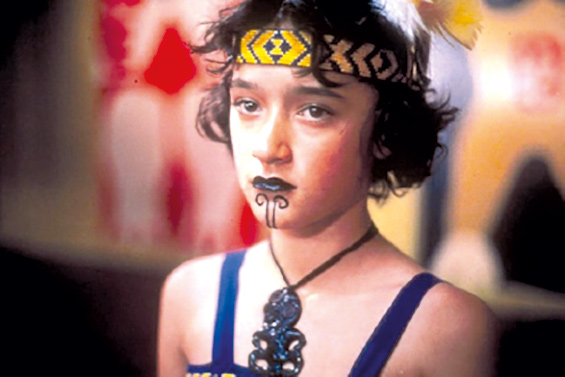
Image 1- Whale Rider, Pikea’s face a true portrayal of patriarchal setup [Video Still]
Nature’s Womb
The movie Whale Rider uses a variety of camera angles to create ecological awareness. Extreme long shots establish setting and the background in which the story will take place and are usually used to show an outdoor location, such as the outside of a building, or a landscape. The extreme long shots in Whale Rider are used to highlight the glorious past of humanity when humans and nature were in harmony.

Image 2- Whale Rider, Biocentrism and Biodiversity [Video Still]
For example, the opening scene of the film shows an extreme long shot constructing the background of compatibility among nature and Maori culture. The water shown in this shot is squeaky clear which reflects that the sea seems happy without any pollution. This shot also gives a connection of the Maori community with the natural objects and creates cognizance about water pollution. It makes us realize for a few moments what we have done to the water. The extreme long shots give an overview of the whole Maori place which is lushly and green. This is a certain type of community that tried to retain their bond with nature. Nature is a womb to which all have to return. There is a constant try of moving back to the natural world. The first sentence of the movie is jarring and foreshadowing our mutual concerns towards the motherland “waiting for someone to love it” (Whale Rider 2002).
Degradation of Mother Nature
Another extreme long shot elaborates on the havocs of environmental degradation. It shows the stranding of whales on the seashore. It is an extremely long shot giving a full view of shoreline where whales are breathing their last breath. Environmental degradation, global warming, and unnecessary invasion of human beings in a natural environment resulted in the return of whales on the sea coast. Marine life is widely disturbed by the activities of humans on earth. Hence, ecofeminism proposes the queer feminist posthumanist climate justice

Image 3. Whale Rider, Signal of apocalyptic ending if climatic justice does not prevail [Video Still]
The film is a powerful medium in constructing and naturalizing a particular ideology. Stranding of the whales on the beach seems to be a signal of apocalyptic ending. In this post-human era, we are unable to figure out the cause of this eco-devastation. Man is constantly thinking about his existence. Entrapment of whales on the seashore and people trying to keep them alive by standing near the whales communicates a positive image of humanity. It conveys a powerful idea to keep the symbiotic relationship of mankind with the environment intact. Maori natives are eco-conscious and promote realization towards other beings (Whale Rider 2002)
The Woman Saviour
The director has beautifully juxtaposed the binary of nature and culture by using several cinematic techniques to sow the reconceptualization of nature as sister and the commonly shared oppression by nonhuman world and women. Camera angle such as mid-shot facilitate the audience to see a figure from the knees/waist up and are usually employed when characters are taking part in the dialogue, or to show actions in detail. Pikea and Koro Airpana are the two characters seen throughout the film who are concerned about the conservation of nature. Koro Airpana tries to bridge the gap between nature and culture believing in the intermingling of both hence saving each other. He introduces a school to teach ancient Maori ways to the community boys who could be the chief at some point in their lives. Pikea tries to prove her grandfather of being worthy to be the chief of a tribe. The film challenges gender stereotypes giving a message that a female is capable of saving the environment. Women are not to be overlooked and undermined and if given chance they can prove themselves effectively. The mid-shot given below highlights the gender binary that prevails in the movie. It challenges the patriarchal and sexist ideologies of societies towards women. The lifting up of stick, strong grip and frowning of a female character highlights a woman’s agency that reflects her stance against the predominant stereotypes of the patriarchal world. The firm upright face of the protagonist clearly shows the strong, eminent position of females in this world. This type of detailed portrayal of action on the part of a female character is an attempt of breaking away from the labels of a victim, oppressed, and having no agency. (Whale Rider 2002)

Image 4. Whale Rider, Challenging the gender binary roles [Video Still]
Drawing on the insights of ecology, feminism, sociology, ecofeminism’s basic premise is that the ideology which authorizes oppressions those based on class, gender, race, sexuality, and physical abilities and species is the same ideology which sanctions the oppression of nature. Ecofeminism calls for the end of all oppressions and observes these oppressions due to the pre-existing system of patriarchy an ideology which views self/other which is atomistic and strong ( Greta Gaard 1993)
Othering Nature
Close up shots show very little background and the entire focus is on expressions and emotions of a character used in the movie. Pikea highlights the ecophobia which prevails in human beings. Human beings have “othered” everything apart from them. They resist other presences. Pikea is a protagonist of Niki Caro’s movie foreshadowing the attitude of mankind towards animals. It challenges the anthropocentric approach of human beings towards nature. Man is now afraid of nature and the contact among humans and nature is still. According to Nancy Chodorow, women have more self of connection whereas men lack this sense of interconnectedness. This interconnectedness attaches women to nature owing to the quality of reproduction and nurturing whereas the male has a separate sense of self and makes moral decisions based on their innate characteristics i.e. supposed strength, the myth of superiority, and lacking responsibility and care. These self-conceptions are culturally learned and these connections lead to violence and a disconnected sense of self which is a root cause of the current ecological crisis. According to Karen Warren, ecofeminism challenges this pluralistic structure and all systems of oppression and suggests a system that values and emphasizes humans in relationships, denies abstract individualism, and provides a guide to the action. Theorists discourage this hierarchal structure of society which privileges one gender and underestimates the other.
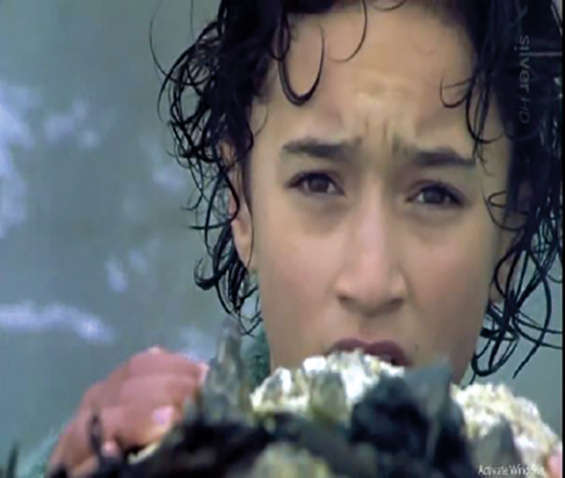
Image 5. Whale Rider, Confronting Nature [Video Still]
Man considers himself as the base and normal and other genders into derivative and has ultimately lost contact with nature and feels afraid while confronting nature. The frowning face of Pikea exposes the repugnance and horror towards the natural environment. (Whale Rider 2002)
The Ultimate Bond
The two pictures given below are the close-up shots of whale and an open eye of a baby and they both denote the arrival of a whale descendent or whale rider. The concept of shadows is used in the story, as it has an important meaning. The symbolism from the beginning foreshadows Paikea’s future as a leader: a close up of the crying baby’s green eye mirrors the close up of a whale’s eye. So the focus of the eye humanizes the whale and connects the young girl to the animal. Hence, the close up of the eye portrays the arrival of Whale rider or the savior of the Maori tribe from extinction. It elaborates on the birth of someone who is going to guard mankind and protect nature. Even the color of the eye is green portraying the color of life and survival of nature.
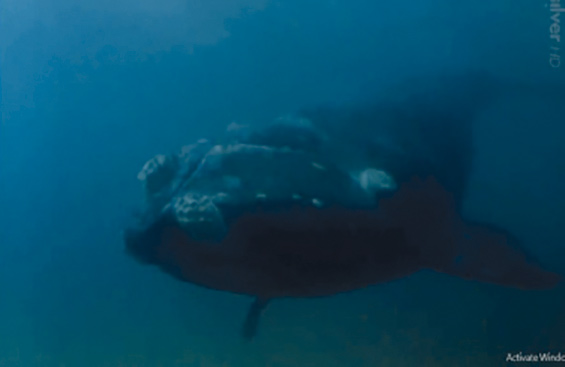
Image 6.Whale Rider [Video Still]

Image 7.Whale Rider, An eye showing a potential to change the world [Video Still]
Woman and Nature, the Nurturers
Whale rider has set juxtaposed imagery of nature. In one shot nature captured as peaceful and calm and there is no trace of its chaotic and destructive nature. The serene imagery provides solace to the human mind and body whereas the other picture highlights the havocs of ruin. The sky is not clear and is full of clouds with dripping rain. The picture highlights the apocalyptic ending of the world. There are no colors in the second picture. Mist, bluish clouds, rain, tides, and stranding of a whale on sea shore all together create imagery of chaos and confusion. It highlights the destructive potential inherent in human beings. Greenery or solace is no more to be seen and the idea of nature as mothering and comforting to mankind is diminished. Ecofeminists have drawn several connections between the oppression of females and the oppression of nature. Many writers have analyzed that the destruction of nature affects women and children at large scales. Acid rains, toxic pesticides, chemical wastes, radiations, pesticides are dangerous for the reproductive systems of females. Ecofeminism is coalition-building movements that criticize oppression on all the groups and reinforce that world wars or havocs, famines or hunger, sexism, racism, or classism mutually affect the condition of life. It is a mutual effort of humanity to save the earth. (Whale Rider 2002)
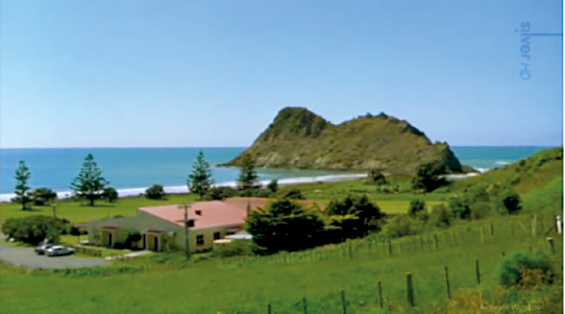
Image 8.Whale Rider, A serene look of saved nature
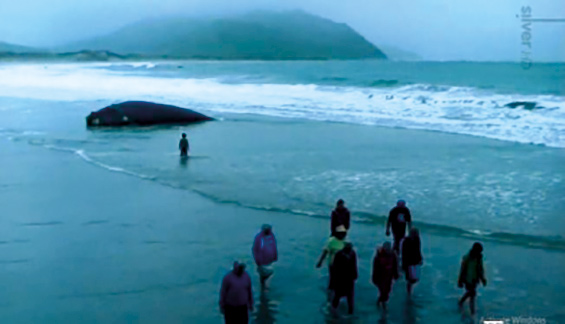
Image 9. Whale Rider, Destructive potential inherent in human beings[Video Still]
Woman, the New Leader
The last long shot of the film is significant. Pikea’s status is evident from the shot as she sits in the middle if tribesmen. Sea is calm and this clarifies not only the position of Pikea in her tribe but the harmony among nature and Maori culture. Maori culture has reunited with nature and saved their community. Pikea is accepted as the chief of the tribe and has become a source of connection amid the sea and the people of the land.
The old culture is continuously struggling to keep its people, its unique traditions and customs alive in a rapidly changing world, that leaves the past behind. The film sets New Zealanders, an example for the rest of the world, and informs the idea that past civilizations and cultures can continue to live in harmony with today’s world. According to Wangari Maathai, women’s efforts are essential and crucial at this point. She believes that things would not happen on their own it is up to u how we channelize our efforts. The final scene in the movie highlights the mutual efforts of a community regardless of the division of a society that categorizes its people. (Whale Rider 2002)
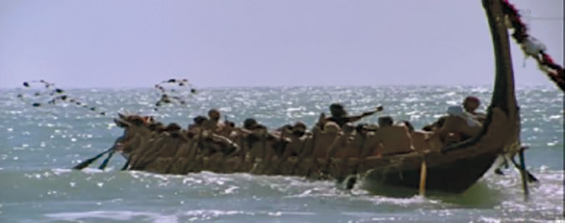
Image 10. Whale Rider, Saving nature is a mutual effort.
Whale Rider challenges binary relations i.e male/female, biocentric/anthropocentrism, and androcentrism. The approach of the patriarchy is anthropocentric and androcentric. Experiments have (ab)used women’s and animal bodies for sites of medical researches. Humans have exploited nature regardless of nature as being the first womb of human beings and natural nurturer. Therefore, the oppression shared by female and nature is common. As the human species approach the capacity to annihilate all life on this planet, it becomes imperative when we challenge the structures of power and domination and together serves and holds the majority of earth’s inhabitants in thrall to the privileged minority. It was due to the staunch efforts of Pikea in The Whale Rider that she enjoys a free ride with her grandfather at the end of the movie. She made him realize that women are the natural nurturer born with innate capacities to look after nature and have the tendency to take radical steps towards the preservation of the environment. Preservation of nature is a communion among all the marginalized groups on this earth and becomes a dominant member in the conservation of the environment.

Image 11. Whale Rider, showing harmony among genders is a way of preserving nature.
Conclusion
To sum up, Whale Rider is an extraordinary film. It is a multi-layered depiction working at many levels. It is an effective film that brings ecological awareness in people coupled with the understanding of shattering gender stereotypes. The film establishes a personal form of communication in the family, despite all cultural, racial, and geographical boundaries. Therefore, ecofeminists reject the nature/culture binary, and this dualism of patriarchal thought and locate animals and the human within nature. In essence, these shifts involve the reconceptualization of the framework of ecofeminism and developing a dialogue with other conscious people building and challenging this theory. Thus, on one hand, it can be considered a film about interpersonal relations and on the other, the employed cinematic techniques help in conveying the ecological concerns in people.
At last, fundamental social transformation is necessary. We must reconstruct the underlying values. All the genders should work within their own space and limit and end this culture which is based on hierarchies and lack of equality. A sense of empathy is an essential element for the social transformation required. Anthropocentric viewpoint, instrumentalist values, and mechanistic values should be rejected for a biocentric view that can comprehend the interconnectedness of all life processes. The humans should not manage or control non-human nature but should work with the land. The use of land should be guided with the ethic of reciprocity and human should stop this intrusion into the natural ecosystem. Merely redistributing power relations is no answer; in fact, a bond of mutual respect and interest should be bound on mutual respect. We must move beyond power. The dualistic conceptual framework of patriarchy supports the message of dominance and divides humanity. The personal is private and we must change the ideology that says the morality of the female sphere has no space in the male public sphere of science, politics, and industry. We must work to rebalance the masculine and feminine and society.
Hence, a woman is a natural nurturer and if given chance can challenge the ideological assumptions and the hierarchal structures of power and domination. The article is a contribution to the evolving debate among different intersections of the society who are eager in paving a balanced and sustainable way of life for all inhabitants on earth.
Bibliography
Butler, Judith.2006. Gender Trouble: Feminism and the Subversion of Identity. Oxfordshire: Routledge
Ihemara, Withi.The Whale Rider. New Zealand: Reed Publishers, 2003.
Iovino, Serenella.2014.“Introduction: Stories Come to Matter”. Material Ecocriticism. Indiana: University of Indiana Press.
Ingram, David. 2004.Green Screen: Environmentalism and Hollywood Cinema. United Kingdom: University of Exeter Press.
Ivakhiv, Adrian J. 2013.Ecologies of the Moving Image: Cinema, Affect, Nature. Waterloo: Wilfrid Laurier University.
Macdonald, Scott. “Toward an Eco-Cinema.” Interdisciplinary Studies in Literature and Environment 11, no. 2 (2004): 107-32. Accessed May 9, 2020. www.jstor.org/stable/44086296.
Slovic, S. 2012. “Editor’s Note”. ISLE: Interdisciplinary Studies in Literature and Environment 4-19
Schmeink, Lars. Biopunk Dystopias: Genetic Engineering, Society, and Science Fiction. Liverpool: Liverpool University Press, 2016. Accessed May 9, 2020. www.jstor.org/stable/j.ctt1ps33cv.
Willoquet-Maricondi, Paula ed. Framing the World: Explorations in Ecocriticism and Film. University of Virginia Press, 2010. Accessed May 9, 2020. www.jstor.org/stable/j.ctt6wrgnd.
Stephen Rust, Salma Monani, Sean Cubitt.Ecocinema Theory and Practice, 2012. Oxfordshire: Routledge
Pat, Brereton. 2015. Environmental Ethics and Film.Oxfordshire: Routledge.
Filmography
Whale Rider. 2002. Directed by Niki Caro.,New Zealand and Germany: South Pacific Pictures DVD.